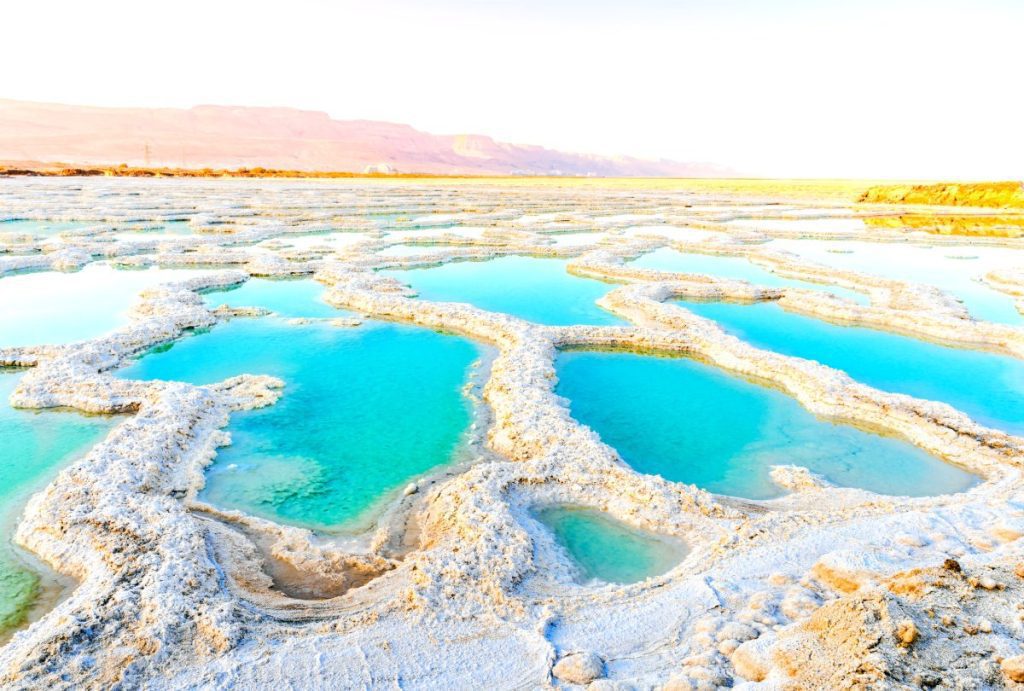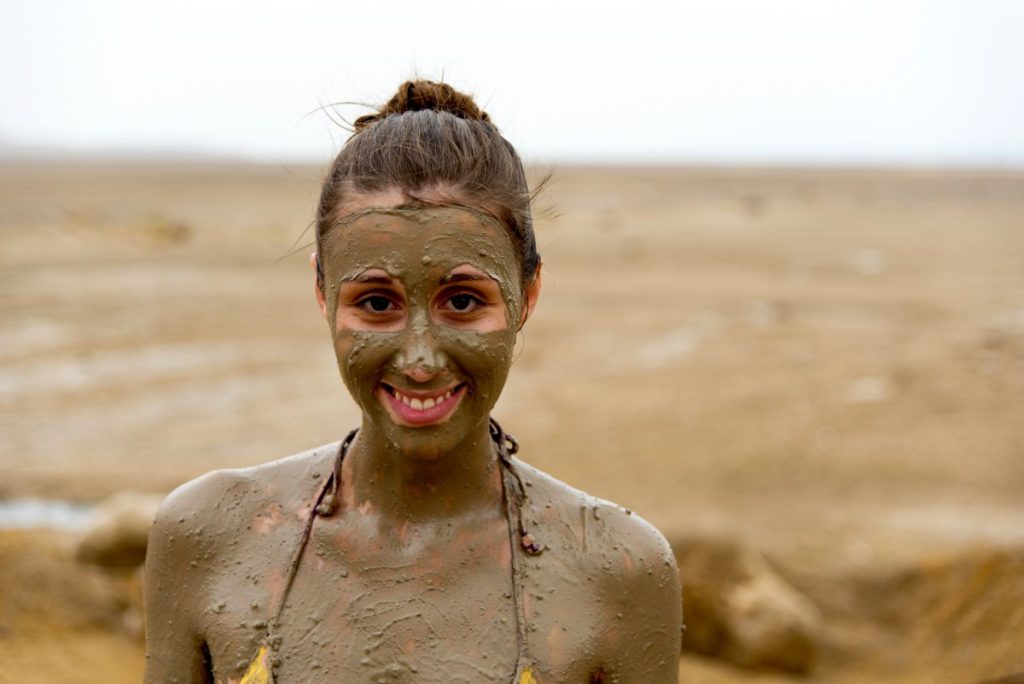The Dead Sea is ironically a salt lake that lies in the Great Rift Valley, and its main tributary is the Jordan River. Its surface and shores are 1,412 ft below sea level. Which is Earth’s lowest elevation on land. It is 997 ft deep in other words, the deepest hypersaline lake in the world. With a salinity of 34.2% it’s officailly one of the world’s saltiest bodies of water. In fact, it’s ten times as salty as the ocean – and has a density of 1.24 kg/liter, which makes swimming similar to floating. All this salt makes it real hard for flora and fauna to survive so only microorganisms can be live there.

The mysterious sea has attracted visitors from around the Mediterranean Basin for thousands of years. It was one of the world’s first health resorts (for Herod the Great), and it has been the supplier of a wide variety of products, from asphalt for Egyptian mummification to potash for fertilizers. The Dead Sea is dropping at a speedy rate; its surface area today is 234 sq mi, which has been almost double in the early 20th century.
The Geography of the Dead Sea
The Dead Sea is a geographic feature formed by the Dead Sea Transform. This left lateral-moving transform fault lies along the tectonic plate boundary between the African Plate and the Arabian Plate. It runs between Turkey and the northern end of the Red Sea Rift offshore of the southern tip of Sinai. It is here that the Upper Jordan River/Sea of Galilee/Lower Jordan River water system comes to an end.

The Jordan River is the only major water source flowing into the lake, although there are small perennial springs under and around the Dead Sea, forming pools and quicksand pits along the edges. There are no outlet streams. The Arnon River, Arnon, is one of the larger water sources of the Dead Sea other than the Jordan.

Other more substantial sources are Wadi Dragot, and Nahal Arugot that ends at Ein Gedi. Wadi Zered in Jordan is another wadi flowing into the Dead Sea. Rainfall is scarcely 100 mm (4 in) per year in the northern part of the Sea and barely 50 mm (2 in) in the southern part. The Dead Sea zone is getting so little rainfall due to the rainshadow effect of the Judaean Mountains. The highlands east of the Dead Sea receive more rainfall than the Sea itself. To the west of the Sea, the Judaean mountains rise less steeply and are much lower than the mountains to the east. Mount Sodom which is a tall mountain made from salt can be seen along the lake, towering to 210 m (700 ft).
Things To Do In The Area
There are lots of cool things to do in the Area! First, you have Masada National Park, which is officially a World Heritage Site by UNESCO. Also, you have the majestic Oasis of Ein Gedi which is worth a visit. And of course don’t miss the opportunity of floating in the Dead Sea, right?! I mean this is a must especially if it’s your first time in the Holy Land.


